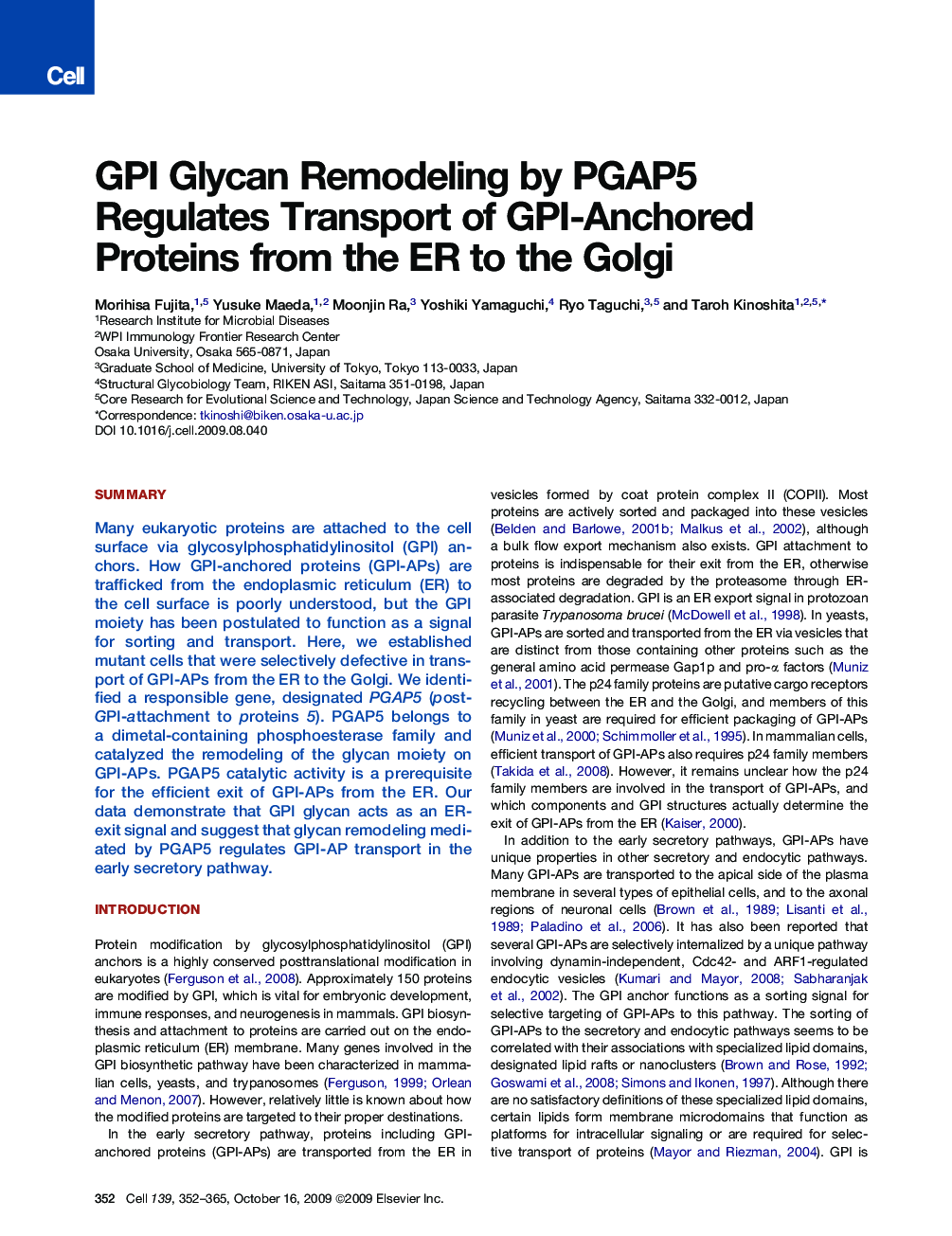| Article ID | Journal | Published Year | Pages | File Type |
|---|---|---|---|---|
| 2036820 | Cell | 2009 | 14 Pages |
SummaryMany eukaryotic proteins are attached to the cell surface via glycosylphosphatidylinositol (GPI) anchors. How GPI-anchored proteins (GPI-APs) are trafficked from the endoplasmic reticulum (ER) to the cell surface is poorly understood, but the GPI moiety has been postulated to function as a signal for sorting and transport. Here, we established mutant cells that were selectively defective in transport of GPI-APs from the ER to the Golgi. We identified a responsible gene, designated PGAP5 (post-GPI-attachment to proteins 5). PGAP5 belongs to a dimetal-containing phosphoesterase family and catalyzed the remodeling of the glycan moiety on GPI-APs. PGAP5 catalytic activity is a prerequisite for the efficient exit of GPI-APs from the ER. Our data demonstrate that GPI glycan acts as an ER-exit signal and suggest that glycan remodeling mediated by PGAP5 regulates GPI-AP transport in the early secretory pathway.
